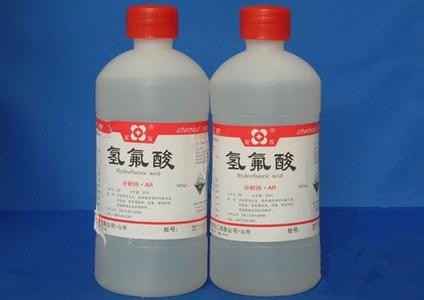does hydrofluoric acid dissolve plastic
Interactions Between Hydrofluoric Acid and Plastics
Hydrofluoric acid (HF) is one of the most reactive acids known, capable of etching glass and dissolving bone. Its behaviour towards plastics, however, is more nuanced. Understanding the interaction between hydrofluoric acid and different plastics is crucial for safety in industrial and laboratory environments.
Does Hydrofluoric Acid Dissolve Plastics?
Hydrofluoric acid does not universally dissolve all plastics. Its reaction depends largely on the chemical composition of the plastic. While it can corrode or degrade certain types under specific conditions, others remain largely unaffected. Research shows HF is less aggressive towards plastics than materials like glass or metal. This indicates that the properties of plastics—being non-polar and composed of long polymer chains—play a role in their resistance.
For example, some sources highlight that plastics such as polytetrafluoroethylene (PTFE) are immune to HF due to their structural characteristics, while others like polycarbonate can degrade under prolonged exposure. This variability demonstrates the importance of choosing the right material for HF storage or handling.

Which Plastics Are Resistant to Hydrofluoric Acid?
Several plastics are extraordinarily resistant to hydrofluoric acid, even at high concentrations or elevated temperatures. These include:
- Polytetrafluoroethylene (PTFE or Teflon): This fluoropolymer is renowned for its near-universal chemical resistance, making it a top choice for HF containment.
- Polypropylene (PP): Known for durability and cost-effectiveness, PP handles HF exposure well when used under controlled conditions.
- Polyvinylidene fluoride (PVDF): This high-performance plastic offers excellent resistance to HF while maintaining rigid mechanical properties.
Materials like PTFE stand out because of their ability to withstand both the chemical and thermal demands of HF storage, as emphasised in this chemical resistance chart.
Why Are Some Plastics Resistant?
The resistance of certain plastics to hydrofluoric acid comes down to their molecular structures. Plastics like PTFE have high levels of fluorine atoms, which form extremely stable bonds with carbon. These bonds prevent HF from breaking down the polymer chains.
In simpler terms, think of these plastics as having an armour of tightly bound atoms that HF can’t easily penetrate. Additionally, their non-porous surfaces act as a physical barrier, further enhancing durability. A great discussion on this topic dives deeper into how these structural features make plastics uniquely suited for HF environments.
Plastics That Are Susceptible to Damage
Not all plastics are created equal when it comes to resisting hydrofluoric acid. Some are more vulnerable to degradation or corrosion, especially under high-concentration or prolonged exposure conditions. These include:
- Polycarbonates (PC): Often used in safety glasses and enclosures, polycarbonates can degrade when exposed to HF, leading to stress cracking and loss of integrity.
- Acrylic (PMMA): While resistant to various acids, acrylic tends to weaken when in contact with HF over time.
- Low-density Polyethylene (LDPE): Despite some resistance at lower HF concentrations, LDPE can exhibit surface damage if exposed to higher concentrations or heat.
Understanding these vulnerabilities can help prevent accidental damage or hazardous situations. For a closer inspection of plastic resistance specifics, check out this detailed chemical resistance guide.
The interactions between hydrofluoric acid and plastics aren’t just an academic concept—they have serious real-world implications. From selecting appropriate storage materials to designing safety protocols, knowing which plastics work and which ones don’t can make all the difference.
Applications Requiring Plastic Containers for Hydrofluoric Acid
Hydrofluoric acid (HF) is a highly reactive substance, posing significant challenges when it comes to safe handling and storage. While its ability to dissolve many materials is intimidating, certain plastics have proven invaluable in containing HF. These plastics are chosen because of their unique chemical properties, offering both resistance and durability. Let’s explore which materials are up to this task.
Examples of Compatible Plastics for Hydrofluoric Acid
When it comes to storing or transporting hydrofluoric acid, selecting the right plastic is critical. Some materials excel due to their resistance to HF’s corrosive properties. Here are the most commonly used plastics and why they are effective:
- Polytetrafluoroethylene (PTFE or Teflon): Known for its outstanding chemical resistance, PTFE is a preferred choice for HF storage. Its non-reactive molecular structure makes it virtually immune to attack by HF, even at high temperatures.
- Polyethylene (PE): Both high-density (HDPE) and low-density (LDPE) polyethylene offer reliable containment for HF. These plastics are resistant to most concentrations of HF and are particularly valued for their flexibility and affordability. Their smooth surface also prevents the acid from seeping or permeating.
- Polypropylene (PP): Lightweight yet strong, polypropylene can handle varying concentrations of HF without degrading. Its thermal stability adds to its appeal for both storage containers and laboratory applications.
- Polyvinylidene fluoride (PVDF): This advanced engineering plastic is often selected for demanding industrial uses. PVDF withstands both HF’s chemical reactivity and mechanical stresses, making it a go-to solution for high-performance applications.






